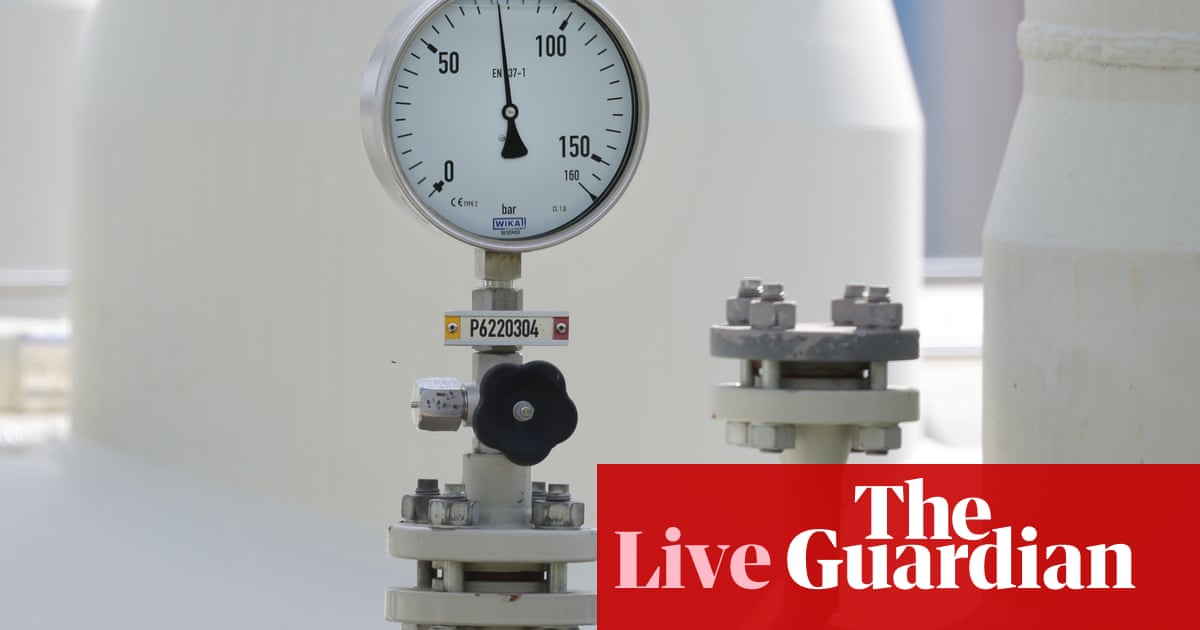We use some essential cookies to make this website work.
We’d like to set additional cookies to understand how you use GOV.UK, remember your settings and improve government services.
We also use cookies set by other sites to help us deliver content from their services.
You can change your cookie settings at any time.
Departments, agencies and public bodies
News stories, speeches, letters and notices
Detailed guidance, regulations and rules
Reports, analysis and official statistics
Consultations and strategy
Data, Freedom of Information releases and corporate reports
Published 11 October 2022

© Crown copyright 2022
This publication is licensed under the terms of the Open Government Licence v3.0 except where otherwise stated. To view this licence, visit nationalarchives.gov.uk/doc/open-government-licence/version/3 or write to the Information Policy Team, The National Archives, Kew, London TW9 4DU, or email: psi@nationalarchives.gov.uk.
Where we have identified any third party copyright information you will need to obtain permission from the copyright holders concerned.
This publication is available at https://www.gov.uk/government/publications/health-disparities-and-health-inequalities-applying-all-our-health/health-disparities-and-health-inequalities-applying-all-our-health
Please note that the Public Health England team leading this policy transitioned into the Office for Health Improvement and Disparities on 1 October 2021.
This guide is part of All Our Health, a resource that helps health and care professionals and the wider workforce prevent ill health and promote wellbeing as part of their everyday practice. All Our Health content on inclusion health, community-centred practice and improving the wider determinants of health may be of particular interest in connection with this topic.
Health inequalities are defined as avoidable differences in health outcomes between groups or populations – such as differences in how long we live, or the age at which we get preventable diseases or health conditions. Similarly, health disparities are described by Healthy People 2020 as:
a particular type of health difference that is closely linked with social, economic and/or environmental disadvantage.
Health disparities are said to adversely affect groups of people who have systematically experienced greater obstacles to health. Depending on the workforce, sector or organisation, different language is sometimes used to describe the same problem. The terms ‘health disparities’ and ‘health inequalities’ are sometimes used interchangeably.
The causes of health inequalities or disparities are complex, but are generally associated with variation in a range of factors that positively or negatively influence our ability to be healthy. This includes individual health-related behaviour, such as:
In recent times, progress has been made in improving key determinants of health for many people including:
However, the benefits of this have not been felt equally across the population, resulting in some groups or people living in some areas continuing to spend more of their lives in poor health and dying sooner than others.
This All Our Health: health disparities and health inequalities resource highlights that everyone can contribute to addressing health disparities and health inequalities in the course of their everyday work or role. It has been created to help a wide range of organisations and professionals, including health and care professionals, practitioners, commissioners, senior leaders, managers, and voluntary and community sector workers to:
In England, there is a 19-year gap in healthy life expectancy (whether we experience health conditions or diseases that impact how long we live in good health) between the most and least affluent areas of the country, with people in the most deprived neighbourhoods, certain ethnic minority and inclusion health groups getting multiple long-term health conditions 10 to 15 years earlier than the least deprived communities, spending more years in ill health and dying sooner.[footnote 1]
The most recent data on how long we live overall (life expectancy for local areas of the UK: between 2001 to 2003 and 2018 to 2020) includes some data from the coronavirus (COVID-19) period. It indicates that life expectancy for men has fallen for England as a whole, but there is significant variation across the regions for both men and women. For example, for men, life expectancy at birth has fallen in all regions other than the south-east and south-west, and, for females, there have been reductions in all regions other than the south-east, south-west and London.
These differences in health outcomes are known as health inequalities – unfair and avoidable differences in health across the population, and between different groups within society. Health inequalities arise because of the conditions in which we are born, grow, live, work and age. These conditions influence our opportunities for good health, and how we think, feel and act, and this shapes our mental health, physical health and wellbeing.[footnote 2]
Figure 1 above shows the broad range of individual characteristics and societal factors that have been identified as contributing to health inequalities. These are:
These factors (or domains) are complex and interact with each other to benefit or disadvantage people or groups, leading to differences in health outcomes. Individuals fall into more than one category and, subsequently, may experience multiple drivers of poor health at the same time.
Figure 2 above illustrates the characteristics of people or places associated with differences in health outcomes.
Some other key terms in health inequalities and health disparities are:
We want everyone to have equally good health. However, the term ‘equality’ is sometimes used to describe equal treatment or access for everyone regardless of need or outcome.
We want fair outcomes for everyone. What is important is addressing avoidable or remediable differences in health between groups of people.
Figure 2 above demonstrates that, to achieve health equity, some groups may need more or different support or resources in order to achieve the same outcomes.
Ideally, the barriers to good health would be removed for everyone, so adjustments wouldn’t be required – however, this is not always possible.
Ensuring everyone can access services equitably (that is according to need) is a key priority for the NHS.
To achieve this, consideration needs to be given to access to information, services and support. Central to this is enabling people to access the right service at the right time for them, reducing variation in the avoidable use of urgent support such as accident and emergency services through better access to preventative care.
The Public Sector Equality Duty set out in the Equality Act 2010 applies to all public bodies and all those that carry out public functions.
The protected characteristics covered by the duty are:
Public bodies are required to have due regard to the need to:
Inclusion health is a ‘catch-all’ term used to describe people who:
These experiences frequently lead to barriers in access to healthcare and extremely poor health outcomes.
Deprivation describes a wide range of living conditions that impact on the lives of individuals and communities. People may be considered to be living in poverty if they lack the financial resources to meet their needs, whereas people can be regarded as deprived if they lack any kind of resources, not just income.
The Index of Multiple Deprivation is the official measure of relative deprivation in England that measures 7 domains of deprivation when combined and appropriately weighted. These are:
Health disparities and health inequalities are not spread equally across England. There are local variations in the concentration of pre-existing health conditions and chronic disease in certain geographies between different areas. Alongside and contributing to driving these are variations in protective factors, such as:
The COVID-19 pandemic has shone a spotlight on health disparities and health inequalities. Disparities or differences in both the risk of getting COVID-19 and of having poorer outcomes have been seen by:
The reasons for these disparities are complex with influencing factors including the impact of existing social and economic inequalities, pre-existing disease and other societal factors.
Alongside the direct impact of COVID-19, some groups have also been more likely to experience greater impact from measures to control the pandemic.
Health disparities and health inequalities impact on the physical and mental wellbeing, and the life chances of the individuals and groups most affected. Alongside the individual human costs, disparities and inequalities impact on society as a whole.
Prior to COVID-19, health inequalities were estimated to cost the NHS an extra £4.8 billion a year, society around £31 billion in lost productivity, and between £20 and £32 billion a year in lost tax revenue and benefit payments.[footnote 3] Health is therefore a major determinant of economic performance and prosperity.
Consequently, taking action on health inequalities:
A wide range of factors influence our ability to be healthy. These factors overlap with one another and are often outside the control of individuals themselves.
Figure 3 above demonstrates the complex interplay between the determinants of health (for example, income and housing), psychosocial factors (for example, isolation and social support), health behaviours (for example, smoking and drinking) and physiological impacts (for example, high blood pressure, anxiety and depression) of wider social determinants of health with psychosocial factors, individual health behaviours and the resulting physiological impacts (for example, high blood pressure, anxiety and depression).
The wider determinants of health include factors such as:
These determinants or influences are not spread equally throughout the population, resulting in some groups experiencing multiple disadvantages throughout their lives, and circumstances compounding to create an un-level playing field.
The ability of individuals to lead healthy lives is influenced both by the wider determinants of health, and by individual factors (health behaviours) associated with people’s opportunities and experiences.
The main behavioural risk factors for poor health – smoking, poor diet or excess weight, physical inactivity and high alcohol consumption – follow the same pattern of uneven distribution as the wider determinants of health, indicating that there is a relationship between an individual’s likelihood of smoking, eating healthily, physical inactivity, and their social and environmental circumstances.
Linked to health behaviours, the concept of ‘health literacy’ refers to people having the appropriate skills, knowledge, understanding and confidence to access, understand, evaluate, use and navigate health and social care information and services. Improving health literacy by supporting patients to engage in shared decision-making can help to reduce health inequalities by empowering and enabling people to navigate individual and societal barriers to improving their health and managing health problems.
The National Institute for Health and Care Excellence (NICE) guideline on shared decision-making describes how to make it part of everyday care in all healthcare settings.
Different exposure to social, economic and environmental stressors and adversities, also known as psychosocial factors, work alongside factors related to our ability to cope such as:
They affect our state of mind from an early age and throughout life, directly affecting resilience, health conditions and health behaviours. Psychosocial factors can help to mitigate or protect against the impact of the social determinants of health.
Because the causes of health disparities and health inequalities are complex, overlapping and not equally distributed, it follows that, in order to address them, our actions need to focus on improving the health of those with the poorest health outcomes first, and fastest. Actions should be evidence based, outcomes orientated, systematically applied, scaled up appropriately and appropriately resourced[footnote 4] to ensure that the gap between populations is narrowed.
This means that everyone and every organisation has a role to play. Building on the findings of Fair Society, Healthy Lives (The Marmot Review), a further report by the Institute of Health Equity focussing on health inequalities in Greater Manchester sets out a framework for addressing the social determinants of health, identifying the range of sectors and organisations that can contribute to this.
Place-based approaches to reducing health inequalities provides tools and resources to support sectors and organisations to work together to take whole-system at-scale action on health inequalities.
It uses the population intervention triangle (see Figure 4, below) to describe how local authorities and policy-makers (civic) can work alongside the NHS and other organisations (services), and with communities (community-centred interventions) to address health inequalities at a scale that makes a difference, and best meets local needs and circumstances. Actions can be targeted to specific population groups, for example:
Interventions should be applied proportionately to need – for example, through a proportionate universalism approach.
Further guidance on community-centred public health (a core component of the population intervention triangle) identifies 11 elements of an integrated whole-system approach, incorporating a range of actions from neighbourhood work through to strategic leadership. Additional learning on community-centred approaches can also be found in Community-centred practice: applying All Our Health..
The following sections set out information to inform the actions that different organisations or sectors can take to play a part in addressing health disparities and health inequalities.
You may wish to focus on the sections relevant to your organisation or role, or to review the whole content to gain wider understanding of the role of different sectors and workforces in addition to your own.
The 2019 NHS Long Term Plan set out that action to drive down health inequalities is central to everything that the NHS does.
In addition, the Health and Care Bill 2021 to 2022 promotes integration and partnership-working to improve health and tackle health inequalities. This action takes place through integrated care systems (ICSs) and integrated care partnerships, place-based partnerships and through working with people and communities, bringing together health, social care, public health and others to develop strategy and plans to address the needs of the local system.
The NHS operational and planning guidance also builds on previous guidance to prevent ill health and tackle inequalities, particularly in light of the COVID-19 pandemic and its disproportionate impact on certain population groups who were already facing disadvantage and discrimination.
Building on this and contributing to the government’s mission to level up health, NHS England and Improvement (now NHS England) launched the Core20PLUS5 approach to support focused action on improving health inequalities, both at a national and system level. This approach is focused on action in the following areas:
Driving this action forward is the NHS England Healthcare Inequalities Improvement Programme, which has the vision of delivering exceptional quality healthcare for all, ensuring equitable access, excellent experience and optimal outcomes. For more information on the work of this programme, please access the Equality and Health Inequalities Network NHS future forum space.[footnote 5]
The Local Government Association highlights the contribution of different determinants of health on health outcomes, setting out the important role of local authorities in prevention including through their specific public health duties and action on the wider determinants of health.
Local authorities duties, functions and interests cover a broad range of activity, from improving health through:
Local authorities can use their leadership role at place to work alongside partners – for example, through health and wellbeing boards, ICS partnerships and local economic partnerships to enable whole-system action on health inequalities. More information and resources can be found on the LGA website and in the government’s health equity collection.
The role of VCSE in addressing health inequalities is wide ranging. For example, the Health Foundation, the Institute of Health Equity and New Philanthropy Capital and the All Party Parliamentary Committee on Arts and Wellbeing identify the contribution that civil society can make to improving health and addressing health inequalities, including through:
Organisations in these sectors are often trusted by and have good reach into many of the most marginalised communities.
ICS implementation guidance on partnerships with the voluntary, community and social enterprise sector provides further insight on how VCSE partnership should be embedded in how the ICS operates, indicating that VCSE is a key strategic partner with an important contribution to make in shaping, improving and delivering services, and developing and implementing plans to tackle the wider determinants of health.
View more information on VCSE’s role in health inequalities from the VCSE Health and Wellbeing Alliance.
Good-quality work is a key contributor to what makes us healthy. Inclusive and sustainable economies: leaving no-one behind identifies the mutually dependent role of the economy and health.
This includes the potential for businesses to act as anchor institutions,working alongside public and voluntary sector organisations to utilise their spending power and scale social value.
In addition, community businesses can make an important contribution to improving health.
All public sector organisations have a role to play in addressing health disparities and health inequalities. For many services, the communities they serve are often those that have the poorest health outcomes.
Emergency services such as the police, fire and rescue and ambulance services already recognise their wider role in prevention and contributing to addressing health inequalities. The Royal Society for Public Health’s Emergency Services Hub provides further information and resources to support this role.
The wider public sector can work together to address specific determinants and direct causes of health inequalities – for example, to reduce violence or in respect of the impact of the built and natural environment on health.
This section sets out some key considerations against priority areas for action identified by national and regional public health teams. It includes prompts for everyone to consider, as well as specific suggestions for different professional and occupation groups.
Ensure you are aware of your organisation or sector’s approach or potential role in addressing health disparities and health inequalities.
You can also keep yourself informed and up to date on the latest information and guidance by joining relevant NHS England Networks or Knowledge Hubs[footnote 5] such as:
In addition, you can review the information above for your organisation or sector, the 6 priority actions for health inequalities below and the suggestions for your occupational group, and consider what you could do in the scope of your role.
Ask yourself:
Ask yourself:
Ask yourself:
Ask yourself:
Ask yourself:
Ask yourself:
Frontline health and care workers have millions of contacts with people at risk of poorer health outcomes every day. As a frontline worker, you can address health inequalities by:
Your work can also contribute to addressing the social conditions of people’s lives such as poverty, disability, damp or overcrowded housing, or a poor diet, making a difference to the communities in which they work.[footnote 6]
My role in tackling health inequalities: a framework for allied health professionals details how allied health professionals can raise awareness, take action and optimise advocacy through 6 lenses:
While the framework was developed for and with allied health professionals, many other frontline professionals may find the approach relevant to their area of work.
In addition to reviewing the allied health professional framework, you can:
Team leaders and managers have an important role in actively seeking out and enabling teams to embed evidence-based action targeted at those with the poorest health outcomes.
As a team leader or manager, you can:
Commissioners play an important role in addressing health inequalities as resourcing decisions and service models can have an impact on health outcomes.
In particular, you can:
The VCSE sector plays an important role in enabling people to improve their health and in addressing determinants of health.
As a VCSE worker, you can:
Leaders make an important contribution to prioritising and embedding whole-system action to address health disparities and health inequalities.
As a leader, you can use your role to:
Data tools and resources can help you to understand more about the causes and impact of health disparities and health inequalities at a national level and in your local area.
A guide to using national and local data to address health inequalities provides an overview of data sources for health inequalities, and their uses. This is updated periodically and can be used alongside local joint strategic needs assessments and other data sources to develop plans to address health inequalities.
The following tools may also be of use:
There are a range of reasons why it makes sense to measure your and your organisation’s impact, and demonstrate the value of your contribution. This could be about sharing what has worked well in order to benefit your colleagues and local people, contribute to growing the evidence base for health inequalities, help in prioritising future resource allocation or for individual professional development.
The following resources can help with evaluating individual, organisational or programme impact:
Further information on health inequalities in specific population groups can be found in other All Our Health resources.
Examples of practice in addressing health inequalities can be found in the UKHSA library, as well as examples on how to use HEAT.
More information on practice in addressing health inequalities can also be found on the Health Inequalities, Healthy Communities and Inclusive and Sustainable Economies Knowledge Hubs.
Barnett K and others. ‘Epidemiology of multimorbidity and implications for health care, research, and medical education: a cross-sectional study.’ Lancet 2012: volume 380, issue 9,836, pages 36–43. ↩
Public Health England. ‘Place-based approaches for reducing health inequalities: main report.’ July 2019. ↩ ↩2 ↩3
Public Health England. ‘Inclusion and sustainable economies: leaving no one behind (executive summary).’ March 2021. ↩
Public Health England. ‘Reducing health inequalities: system, scale and sustainability.’ August 2017. ↩
This forum is open to all but requires users to register or request membership. ↩ ↩2 ↩3 ↩4 ↩5
Social Care Institute for Excellence. ‘Tackling inequalities in social care.’ ↩
Don’t include personal or financial information like your National Insurance number or credit card details.
To help us improve GOV.UK, we’d like to know more about your visit today. We’ll send you a link to a feedback form. It will take only 2 minutes to fill in. Don’t worry we won’t send you spam or share your email address with anyone.



